COSTA RICA: SUSTAINING COMMUNITIES WITH FOOD, FUEL & INCOME THROUGH A MODEL AGROFORESTRY PROJECT
RTE Agroforestry Project In Costa Rica- Sustaining Communities With Food, Fuel, And Income
-By Gina Connelly
Remineralize the Earth, in partnership with John Todd of Ocean Arks International, embarked on a visionary mission in the hilly country of Guanacaste, Costa Rica. The Agroforestry Project in Costa Rica: Food, Fuel, and Income to Sustain Local Communities was a model project designed to demonstrate the potential and evaluate the effectiveness of remineralization while restoring the devastated tropical forests of the region.
The Vanishing Forests of Guanacaste, Costa Rica
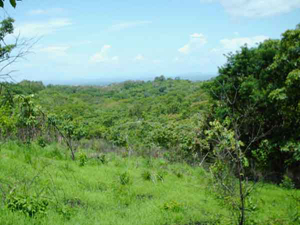
The forest edge in Guanacaste, Costa Rica
Fifty years ago, the province of Guanacaste, Costa Rica was a self-sufficient agricultural community isolated and unscathed by the modern world. When construction began on a network of roads in the 1960s, Guanacaste became accessible to outsiders and the timber industry exploded in the area. The thick, lush forest gave way to a hotter, drier landscape. The open pastures allowed the heavy clay soils from the hillsides to wash down unobstructed to the valley below. This created an impermeable layer of topsoil, making the native soil underneath inaccessible and prevented the recharge of rivers and aquifers. Exotic grasses that would contribute nothing to the replenishment of the natural mineral content of the land were planted to sustain cattle production. In more recent years, the land has been exhausted and cattle production is low. Erosion and exposed soils support a diminished flora, and atmospheric carbon sequestration by plants is at an all time low.
The Visionary Plan of John Todd, “Hero of the Earth”
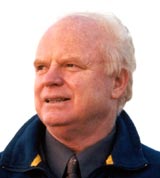 The Guanacaste region was well on its way to becoming a desert of arid pastures dotted with scattered brush when Dr. John Todd of Ocean Arks International proposed a solution. Dr. Todd is an internationally recognized biologist and visionary leader in the field of ecological design. He was named “Hero of the Earth” by Time Magazine in 1999 and was one of the 20th century’s top 35 inventors according to the Lemelson-MIT Program for Invention and Innovation. He is the inventor of Living Machines, or ecological engines, for the treatment of wastes, production of foods, generation of fuels and restoration of damaged aquatic environments. Believing that, “remineralization is the basis of restoring soil fertility,” Todd partnered with Remineralize the Earth to design an agroforestry project that would restore the devastated lands of Costa Rica.
The Guanacaste region was well on its way to becoming a desert of arid pastures dotted with scattered brush when Dr. John Todd of Ocean Arks International proposed a solution. Dr. Todd is an internationally recognized biologist and visionary leader in the field of ecological design. He was named “Hero of the Earth” by Time Magazine in 1999 and was one of the 20th century’s top 35 inventors according to the Lemelson-MIT Program for Invention and Innovation. He is the inventor of Living Machines, or ecological engines, for the treatment of wastes, production of foods, generation of fuels and restoration of damaged aquatic environments. Believing that, “remineralization is the basis of restoring soil fertility,” Todd partnered with Remineralize the Earth to design an agroforestry project that would restore the devastated lands of Costa Rica.
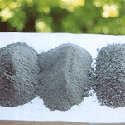
Finely ground basalt rock dust
The plan involved using local volcanic rock dust to enrich the soil while reforesting the grasslands and thereby increasing carbon sequestration. The project would demonstrate the potential and evaluate the effectiveness of soil remineralization using finely ground rock dust to create fertile soils in climates with pronounced wet and dry seasons. At the same time, the accumulation and long-term storage of organic carbon in forest soils would be studied. The landscape would produce short and mid-term economic value followed by slower maturing long-term forests that would benefit the region in the years to come.
Food, Fuel, and Income
The potential for remineralization would be exhibited in three different groups of trees and shrubs: native hardwoods of commercial value, fruit trees for local consumption, and oil-producing trees for fuel use.
Native hardwoods would contribute material for commercial products to help sustain the regional economy. Although slow-growing, hardwoods’ benefits would be experienced in decades to come. They would also play a role in returning the historic ecology of Guanacaste as native forest species are now rare in the wild. The candidate species of hardwoods included the Guanacaste tree, Cocobol, Ron Ron, Guapinol, Cenizara, Cortez Amarillo, and the Ceiba tree.
The agricultural component of the agroforestry project was fulfilled by the planting of fruit and nut trees which would produce food for local consumption. The benefits of these plants would be experienced much more readily in the region than those of the hardwood trees. Some of the food-bearing trees included in the project were the avocado, wild cashew, guava, Spanish plum, lemon, lime, mango, orange, papaya, and grapefruit.
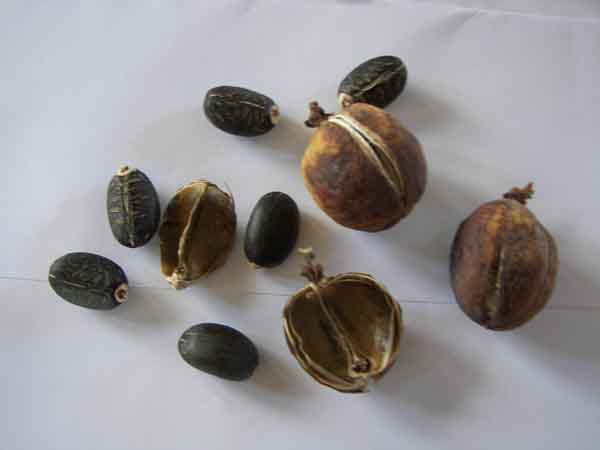 |
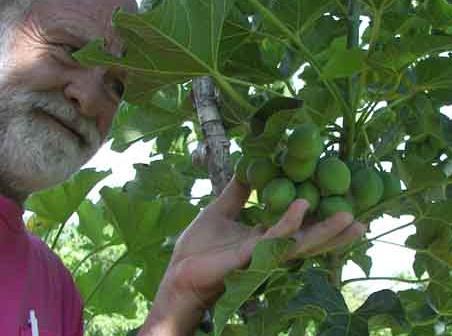 |
|
Healthy Jatropha seeds |
Project Manager William Turley and one-year old Jatropha fruit |
The oil-producing trees were the most anticipated component of the project as the demand for a sustainable fuel source continues to increase around the world. The Jatropha is a small tree distinguished from other sources of biofuel because in addition to its oil production, it has the ability to simultaneously enhance soil fertility and sequester carbon. A crop of Jatropha would yield 1590kg/hectare/year or 3500lbs/hectare/year of oil highly suitable as biodiesel fuel and a local source of energy.
While each category of tree contributes a specific purpose to the project, all would play a part in helping to heal the land, build the soil, remove carbon dioxide from the atmosphere, and in turn combat global climate change.
Remineralizing the Land
The project consisted of 2 test plots encompassing a 2 hectare (5 acre) area of land located 15 kilometers from the town of Bagaces. One hectare served as the control plot and did not receive the rock dust application. The other hectare was the experimental plot and was remineralized with rock dust of volcanic origin quarried in the vicinity. Local rock dust is important to use in application as it contains the natural minerals and elements the native species require to flourish.
Approximately 1,600 trees/hectare were planted with 2.5 meter spacing in between each specimen. The amount of rock dust applied was 340kg/hectare or 750lbs/hectare distributed on an annual basis for 5 years. All trees in both the control and experimental plots were given compost at the time of their planting. No trees would be irrigated during the dry season in either plot unless they became severely stressed.
The growth and health of the plants between the two groups was compared throughout the study. The Jatropha trees receiving the rock dust produced larger and more abundant seeds and grew more vigorously than their counterparts in the control plot. The remineralized group also exhibited a larger root mass and greater leaf density.
William Turley served as the onsite director of the project who lives full-time in Guanacaste and is an original member of New Alchemy Institute and long time champion of renewable energy technologies. Local Costa Rican residents provided the majority of planting and maintenance work.
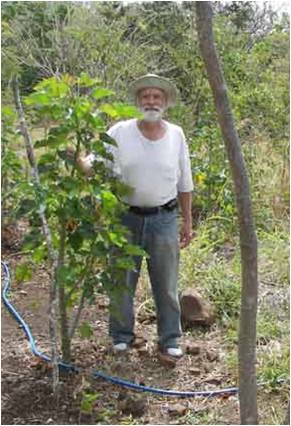 |
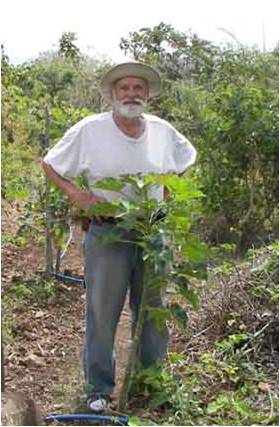 |
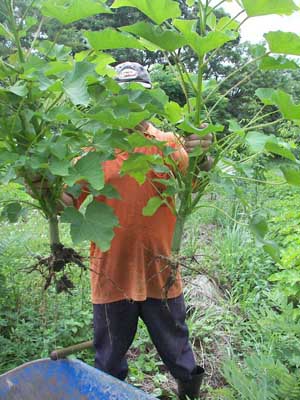 |
|
William Turley demonstrating the difference in growth between a remineralized Jatropha tree (far left) and a control (middle). The difference in root mass and leaf density between a remineralized Jatropha on the left and a control on the right (far right). |
||
Costa Rica’s Example
Costa Rica was chosen for this program because of the ecological need, the year-round growing season which allows for high rates of carbon dioxide removal, and because it is a country dedicated to conservation, peace, universal education and health care. In many ways, Costa Rica is a model for how all societies could be organized.
Duplicating this experience in Kenya and other parts of Africa with sustainably intercropped Jatropha as a biofuel could replace firewood harvesting and importation of expensive kerosene in rural areas. It could provide sustainable livelihoods in areas now severely damaged by drought, desertification, and hunger. Agricultural soils which are exhausted and losing organic carbon, thereby fueling global climate change, could be restored to agricultural food production in just a few years.
I have long been interested in conservation and studying the world around me. I found RTE through a volunteer match website and believed in their mission. I assist with content writing for the website where I am able to help others understand the importance of their work. I hold a Bachelor’s degree in Biology and a Master’s degree in Forensic Science. I work as an environmental chemist specializing in trace metal analysis of soil and water. I am also a volunteer content writer for International Environmental Data Rescue Organization, an eco-friendly non-profit dedicated to weather data collection and restoration.
From Ocean Arks International (2008). About Annals: About Costa Rica. Annals of Earth,Volume XXVI, Number 1, 2008. Retrieved November 1, 2009, from http://www.oceanarks.org/documents/AOE-3.pdf.






